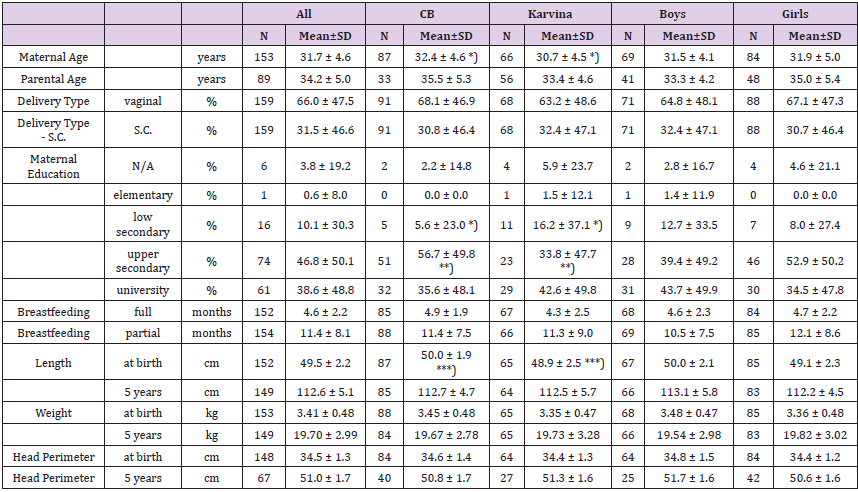The Therapy of Cancer
Mini Review
With the extension of the average life expectancy of human beings, the threat of cancer to human beings has become increasingly prominent and it has become the first cause of death for urban and rural residents in China. At present, there are many kinds of malignant tumors, different types of properties, different tissues and organs involved, different disease periods, and different responses to various treatments, so most patients need comprehensive treatment. The so-called comprehensive treatment is based on the patient’s physical condition, the pathological type of the tumor, the scope of invasion, etc., comprehensively using surgery, chemotherapy, radiotherapy, immunotherapy, traditional Chinese medicine treatment, interventional therapy, microwave therapy, etc., in order to greatly improve the cure and improve the quality of life of patients.
With the extension of the average life expectancy of human beings, the threat of cancer to human beings has become increasingly prominent and it has become the first cause of death for urban and rural residents in China. At present, there are many kinds of malignant tumors, different types of properties, different tissues and organs involved, different disease periods, and different responses to various treatments, so most patients need comprehensive treatment. The so-called comprehensive treatment is based on the patient’s physical condition, the pathological type of the tumor, the scope of invasion, etc., comprehensively using surgery, chemotherapy, radiotherapy, immunotherapy, traditional Chinese medicine treatment, interventional therapy, microwave therapy, etc., in order to greatly improve the cure and improve the quality of life of patients.
In theory, if the tumor cells are completely removed by surgery, the cancer can be cured. Surgical resection is still the treatment of choice for early or earlier solid tumors. According to the purpose of the surgery, it can be divided into the following categories:
It treats cancer with drugs that kill cancer cells [7]. Since the biggest difference between cancer cells and normal cells is rapid cell division and growth, the principle of anticancer drugs is usually to inhibit the growth of cancer cells by interfering with cell division, such as inhibiting DNA replication or preventing chromosome segregation. Most chemotherapy drugs are not specific, so they kill normal tissue cells that undergo cell division, and often damage healthy tissues that need to be split to maintain normal function, such as intestinal mucosal cells. However, these tissues usually repair themselves after chemotherapy. Because some drugs can be combined for better results, chemotherapy often uses two or more drugs at the same time, called “comprehensive chemotherapy,” and most patients use chemotherapy in this way.
It uses radiation to kill cancer cells and shrink tumors. Radiation therapy can be via in vitro radiation therapy or in vivo proximity radiation therapy [8]. Since cancer cells grow and divide faster than normal cells, the genetic material of the cells is destroyed by radiation, which prevents cells from growing or dividing, thereby controlling the growth of cancer cells. However, the effects of radiation therapy can only be limited to areas that receive exposure. The goal of radiation therapy is to destroy as many cancer cells as possible while minimizing the impact on neighboring healthy tissue. Although radiation exposure can cause damage to both cancer cells and normal cells, most normal cells can recover from radiation-induced damage.
Targeted therapies [9] have seen significant effects in the treatment of certain types of cancer since the late 1990s, and they are as effective in treating cancer as chemotherapy, but with fewer side effects than chemotherapy. It is also a very active research area at the moment. The principle of this treatment is the use of small molecules that specifically target abnormal or dysregulated proteins of cancer cells, such as tyrosine kinase inhibitors, for the treatment of EGFR (epidermal growth factor receptor) sensitive mutations in non-small cell lung cancer. The curative effect is remarkable, but the emergence of drug resistance genes is currently the main obstacle hindering further improvement of curative effect.
Immunotherapy uses the immune mechanism in the body to fight against tumor cells [10]. There have been many immunotherapies against cancer in research. Currently, cancer vaccine therapy and monoclonal antibody therapy are more advanced, immune cell therapy is the latest development of treatment technology in recent years.
Combined with surgery, radiotherapy and chemotherapy can reduce the side effects of radiotherapy and chemotherapy, promote patient recovery and enhance the tolerance to radiotherapy and chemotherapy [11].
By introducing foreign genes into the human body to correct gene defects, the concept of gene therapy [12] for malignant tumors has expanded from correcting gene defects to introducing foreign genes into the human body, eventually achieving direct or indirect inhibition or killing of tumor cells.
The occurrence and growth of certain tumors are closely related to hormones in the body, so they can be treated by changing the endocrine status. For example, sex hormones can be used for palliative treatment of breast cancer [13], prostate cancer, and endometrial cancer.
The advantages of high density, good parallelism, and accurate positioning of the laser are used to make a bloodless resection of the lesion after moderate focus [14].
Although there are many treatments for cancer, chemotherapy is still the main treatment in clinical. However, as technology continues to advance, the development of cancer treatment drugs will be dominated by targeted drugs plus immunotherapy. The field worthy of further to study. To provide new ideas for the best personalized treatment for different patients. And new methods play an important role in the fight against cancer.
More BJSTR Articles : https://biomedres01.blogspot.com

No comments:
Post a Comment
Note: Only a member of this blog may post a comment.